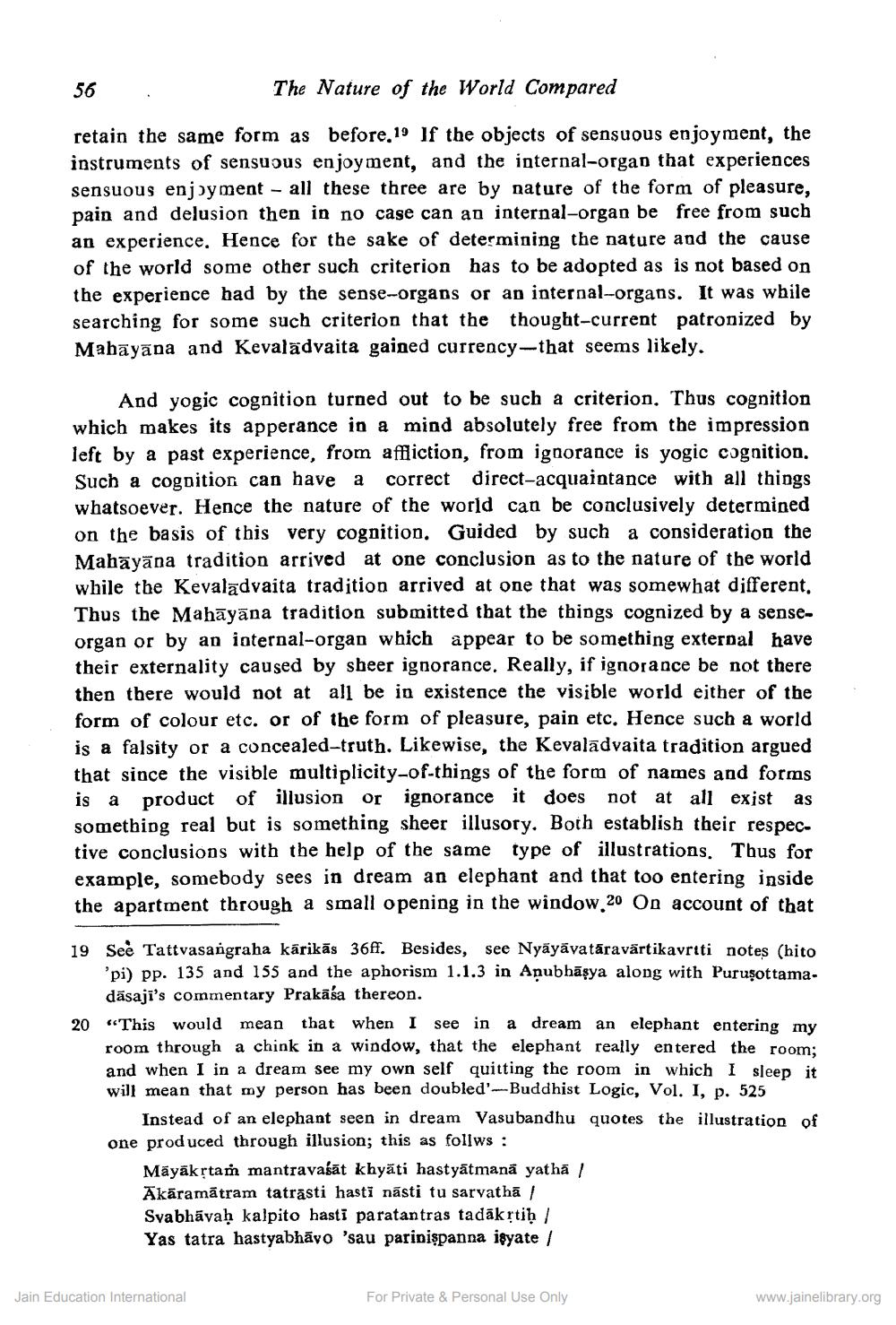________________
so
56
The Nature of the World Compared
retain the same form as before 19 If the objects of sensuous enjoyment, the instruments of sensuous enjoyment, and the internal-organ that experiences sensuous enjoyment - all these three are by nature of the form of pleasure, pain and delusion then in no case can an internal-organ be free from such an experience. Hence for the sake of determining the nature and the cause of the world some other such criterion has to be adopted as is not based on the experience had by the sense-organs or an internal-organs. It was while searching for some such criterion that the thought-current patronized by Mabāyāna and Kevaladvaita gained currency- that seems likely.
And yogic cognition turned out to be such a criterion. Thus cognition which makes its apperance in a mind absolutely free from the impression left by a past experience, from affliction, from ignorance is yogic cognition. Such a cognition can have a correct direct-acquaintance with all things whatsoever. Hence the nature of the world can be conclusively determined on the basis of this very cognition. Guided by such a consideration the Mahāyāna tradition arrived at one conclusion as to the nature of the world while the Kevaladvaita tradition arrived at one that was somewhat different, Thus the Mahāyāna tradition submitted that the things cognized by a senseorgan or by an internal-organ which appear to be something external have their externality caused by sheer ignorance. Really, if ignorance be not there then there would not at all be in existence the visible world either of the form of colour etc. or of the form of pleasure, pain etc. Hence such a world is a falsity or a concealed-truth. Likewise, the Kevaladvaita tradition argued that since the visible multiplicity-of-things of the form of names and forms is a product of illusion or ignorance it does not at all exist as something real but is something sheer illusory. Both establish their respective conclusions with the help of the same type of illustrations. Thus for example, somebody sees in dream an elephant and that too entering inside the apartment through a small opening in the window.20 On account of that
19 See Tattvasangraha kärikäs 36ff. Besides, see Nyäyävatāravärtikavrtti notes (hito
'pi) pp. 135 and 155 and the aphorism 1.1.3 in Anubhāşya along with Purusottama
däsaji's commentary Prakāśa thereon. 20 “This would mean that when I see in a dream an elephant entering my
room through a chink in a window, that the elephant really entered the room; and when I in a dream see my own self quitting the room in which I sleep it will mean that my person has been doubled'--Buddhist Logic, Vol. I, p. 525
Instead of an elephant seen in dream Vasubandhu quotes the illustration of one produced through illusion; this as follws :
Māyākstam mantravaśāt khyāti hastyātmana yathä / Akāramātram tatrasti hasti nästi tu sarvathā / Syabhāvah kalpito hasti paratantras tadakrti) / Yas tatra hastyabhāvo 'sau parinişpanna ifyate /
Jain Education International
For Private & Personal Use Only
www.jainelibrary.org




